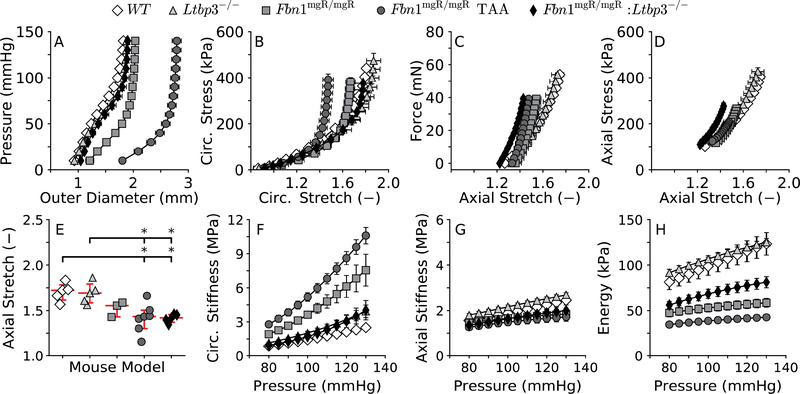Figure 2.
Biaxial mechanics (A-D) and computed mechanical metrics (E-H) for the considered ATAs, with values of material circumferential (F) and axial (G) stiffness, and energy storage (H) at specimen-specific values of in vivo axial stretch (E) shown over a range of transmural pressures. Note that the pressure-diameter response clearly delineates aneurysmal (TAA) from pre-aneurysmal ATAs (A). Also, note the near full rescue of the circumferential, but not axial, properties in the double mutant ATAs. Consistently, absence of LTBP-3 does not fully recover the stored elastic energy, which depends on both circumferential and axial properties, suggesting that overall vascular function is not fully rescued in Fbn1mgR/mgR:Ltbp3−/− specimens. Statistical significance is set to *p < 0.05 for the axial stretch, whereas statistical differences in the pressure-dependent metrics, in unloaded and two loaded configurations (P=100 mmHg and P=120 mmHg), are reported in Table S1.

